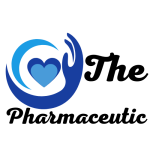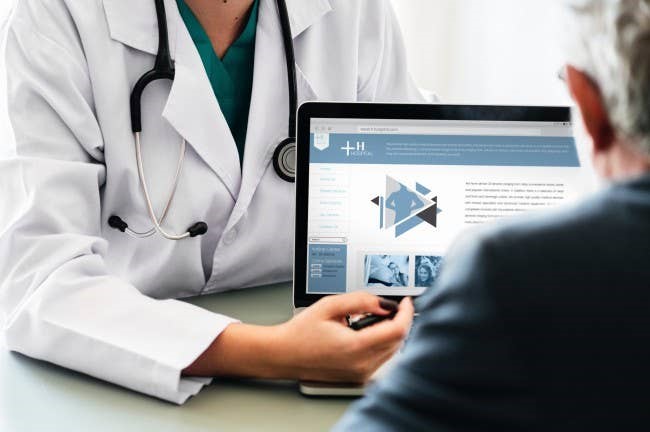Technology is altering all aspects of our lives, including the ever-changing field of medicine. Technology has allowed doctors to collect information in a more organized manner and explore various treatment options and develop new tools to perform their duties in medical practice. Robots can make surgeries more efficient and digital dispensing makes it much easier to fill prescriptions and keep them updated with the correct dosage.
Communication between doctors and patients has greatly improved by way of education (as doctors are able to use tools and 3D pictures to show patients what’s going on) as well as through Telehealth (as the technology has never made it simpler for patients to connect with doctors via video chats using Zoom Memojilikeclark Theverge). These are the seven different ways in which healthcare technology and science are enhancing the medical field:
It’s Making Treatments More Effective
A few of the best industry experts agree among the main benefits of technological advancements in healthcare is improved access to healthcare. Health IT has opened up opportunities for new discoveries and improved more targeted research. Information gathered from hospitals as well as electronic devices, apps as well as Artificial Intelligence (AI) models are now able to assess the risk of patients.
Artificial Intelligence (AI) can be described as the imitation of human-like intelligence in machines that are designed to be able to think like humans and replicate their actions but is much more efficient. For instance, Canada’s TELUS Health teamed up to develop a unique Canada-specific AI application that analyzes the answers to a survey of a patient and then connects them through video to the appropriate medical professional or healthcare provider. AI helps physicians and patients by completing tasks typically performed by humans but in a shorter time and at less cost.
Digital Dispensation Is Accelerating The Prescription Process
Making sure that every patient has the correct prescription and the correct dosage is essential. However, storing all of this information in a systematic manner isn’t always easy. The electronic dispensing of prescriptions has greatly simplified and sped up the process of preparing and renewing prescriptions at the right time.
There are numerous companies in the healthcare industry that are always innovating and developing apps for smartphones that can send messages to patients whenever they are due to renew prescriptions. The majority of the time, you can also renew it through the app with just one or two clicks. Certain pharmaceutical firms are taking this a step further and are introducing digital doctor visits via their apps. This ensures that patients and their physicians are on the same page and there are no gaps that could compromise patient care.
Real-time patient data
Care for patients was and is still the primary focus of healthcare, as well as all its technological advances. The development of the field of healthcare technology and science has led to patient care becoming superior and efficient in many cases, through the introduction of new devices (such as MRIs) as well as medicines and treatments that can save lives and increase the likelihood of healing for many.
One of the main advantages of health information technology (HIT) is that doctors are now able to use mobile and tablet devices to keep track of real-time patient information. For instance, you could easily update the patient’s medical record and then instantly share it with their most recent medical history.
Today, crucial patient details like laboratory results, medical records of vital indicators, or other vital information about patients are easily centralized and accessible. This type of storage has changed the standard of care that doctors are able to provide to their patients since they are always informed of the latest developments. Not only does this information collection aid doctors, but it also assists researchers and scientists study the history of patients to discover new patterns and make more effective treatments for various illnesses.
Software Is Improving Healthcare Efficiency
Medical software is essential to the health industry because it allows healthcare professionals to manage and monitor patients’ data and organization efficiently. The software can aid in daily processes and improve the efficiency of clinical workflows. Consider, for instance, the World Health Organization which has successfully classified illnesses, as well as their symptoms and causes into a vast database that has over 14000 individual codes. These databases allow doctors as well as researchers to look at the condition from a variety of perspectives and discover solutions that will be used to not only manage the illness but also improve overall health outcomes in general.
Another crucial aspect in which software can make physicians’ lives easier includes medical billing. The process of billing requires a lot of paperwork. Simple-to-use bill-paying software will not only simplify the billing process but reduces the amount of time that you are occupied with admin tasks.
The end result is that software as well as electronic medical records assist both patients and doctors. They have all details of the patient and the latter is able to enjoy the highest degree of transparency within the medical system. One of the most important areas where transparency is essential between doctors and patients is in regard to issues such as medical mistakes. Information about the patient and the doctor’s prescription for treatment should be meticulously recorded and readily available in the near future.
Fast And Seamless Patient-Doctor Interaction
In the past, if someone wanted to consult the doctor, they’d have to call in order to schedule an appointment, communicate with an attendant, and then wait for long periods. Today, all of this can be accomplished easily through a mobile application or online. You can make an appointment without getting off your couch!
Startups across the globe are transforming the way patients communicate with their physicians. For instance, the online platform for content marketing Thermophore has highlighted an American-based company that has created an application known as Haydock that allows patients and doctors to view their medical documents in English as well as Spanish.
Robots Are Making Surgeries More Successful And Less Expensive
Robots that perform surgery might be a scary science fiction concept in the past but now not only is it widespread, but also highly advised. Human strength can only take surgeons to the dark, hard-to-access parts within the body. However, there is no limit for robots. They can reach beyond what humans are able to, and this small fact has led to more successful surgeries than any before.
For instance, surgeons make use of robots to aid them in the removal of brain tumors. In one case that involved teenage surgeon, a doctor employed the latest robotic microscope technology during the procedure. The doctor explained that the instrument was equipped with a robotic arm and an GPS component that could show the exact location of his equipment as well as a heads-up display that showed a clearer view the surgical area.
The market for medical robots is anticipated to grow to the sum of USD 12.7 billion in 2025 from an estimated 5.9 billion by 2020. This is CAGR of 16.5 percent during the forecast time. The main factors driving the market’s growth are the benefits offered by robotic surgery, as well as robot-assisted training in rehabilitation therapy, and more.
Robots have made certain procedures more invasive. In recent news reports there’s been evidence that robots have helped hospitals not only save lives, but also reduce the costs of labor. In some locations, there are robots that deliver meals to the patients’ rooms as well as cleaning.
Easier To Predict Outbreaks
AI Big Data and AI play major roles in the health industry. Big Data is a collection of data that is massive in size and is growing exponentially with the passage of time. To fully understand and research various diseases, AI-based analysis, and predictive models could be employed by medical experts. A Toronto-based artificial intelligence company called Blue Dot, which uses machine learning to monitor outbreaks of infectious diseases around the world, alerted clients–including various governments, hospitals, and businesses–to an unusual bump in pneumonia cases in Wuhan, China. It later evolved into the phenomenon we now call Covid-19. Healthcare technology could play an important role in the near future in identifying patterns and identifying an outbreak earlier so that precautions can be taken.
Conclusion
This is the perfect moment to look around and be an active participant in the advances occurring due to medical technology and science. There are more effective treatments available that are accessible to patients and advances allow us to explore and develop new and more efficient methods to deliver care to patients. The healthcare landscape is much more dynamic and accommodating for patients than in the past, because of healthcare IT. It will be fascinating to see what innovations and discoveries are in store for the field of healthcare science and technology.

